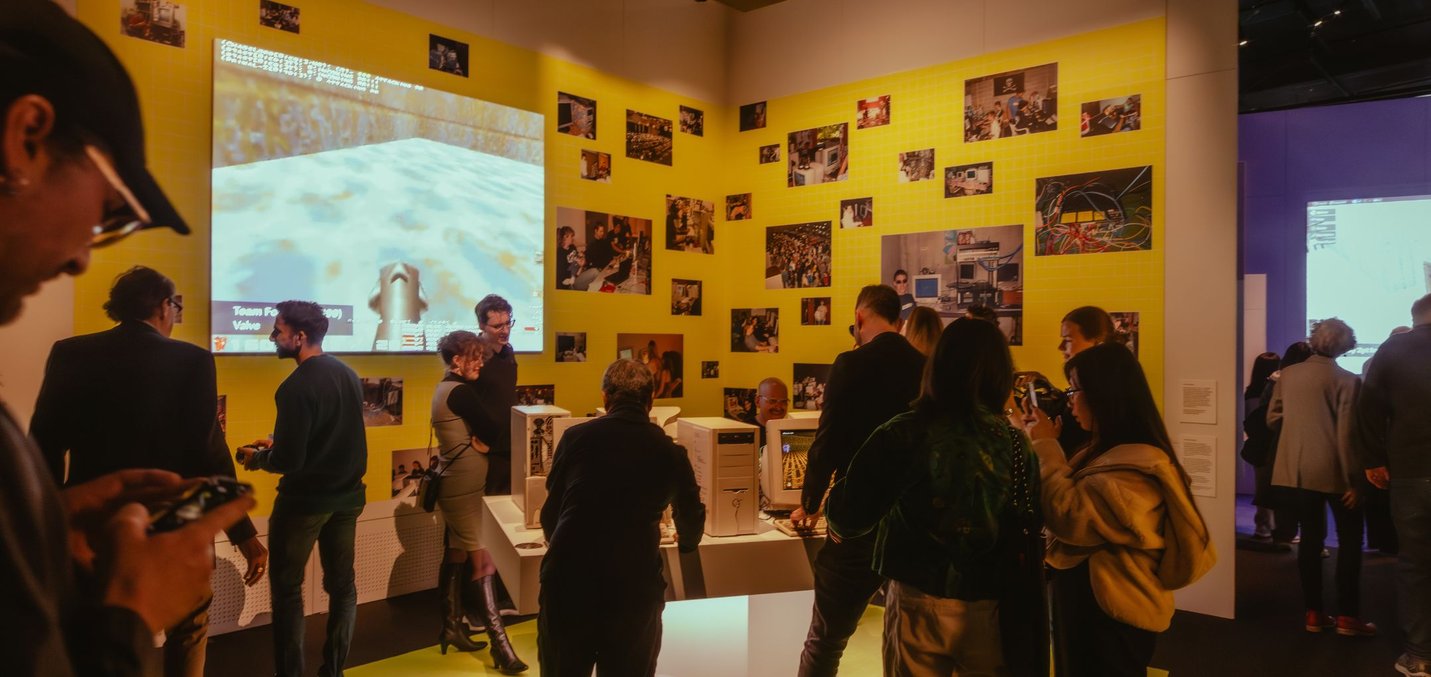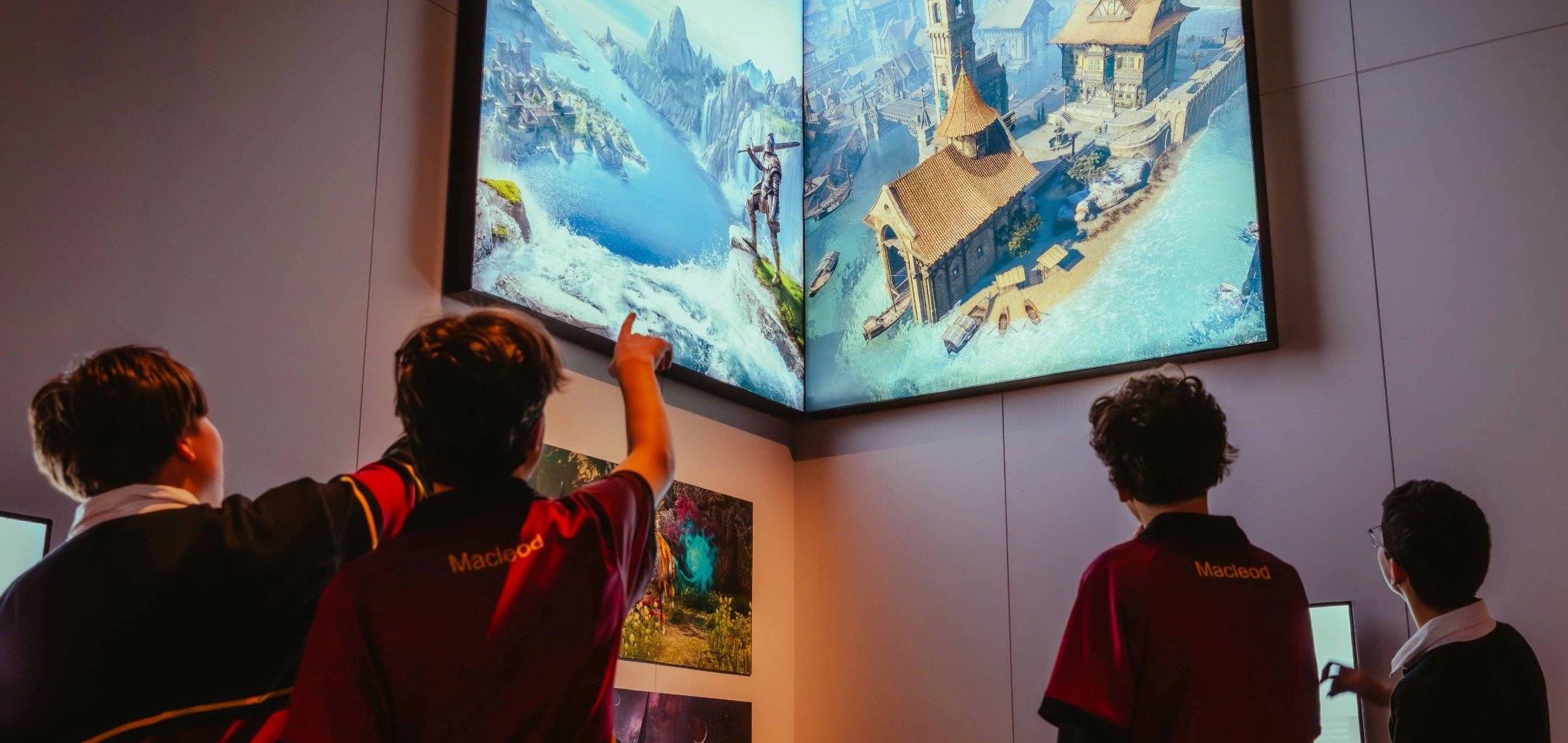
Game Worlds resource | Primary
Game Worlds, ACMI's newest exhibition, explores the origins and evolution of game and videogame worlds.
This resource is here to complement a visit to Game Worlds, but can be used without visiting. If visiting, we recommend using this resource afterwards, but teachers, feel free to read through as you might consider using prior to a visit.
There is so much in the Game Worlds exhibition, including may games, ideas and themes. We have focused on three big ideas relating to game worlds; the idea of game worlds being explorable, shapeable, and shareable.
Teachers, you might also like to engage students with the ideation activity sheet below. There is an A4 and an A5 version, and we recommend students work in pairs. We have highlighted where in this resource you might like to tackle different aspects of the activity sheet with the quick links at the top of this page.
Alright, is everyone ready? Let's play!
Explorable game worlds
Confined worlds
Videogames didn't always have large worlds or environments to explore.
As a class, consider a few older videogames (from the 1970s and 1980s) like Pong, Ms Pac Man, and Space Invaders. Teachers, you might like to find footage or even online playable versions of these games to share with the class.
As a class or in groups, discuss:
- What do you notice about the boundaries or these games? Are there any? If so, describe them, and the limitations it puts on the player
- Would you describe these videogames as having game 'worlds'? Why, why not?
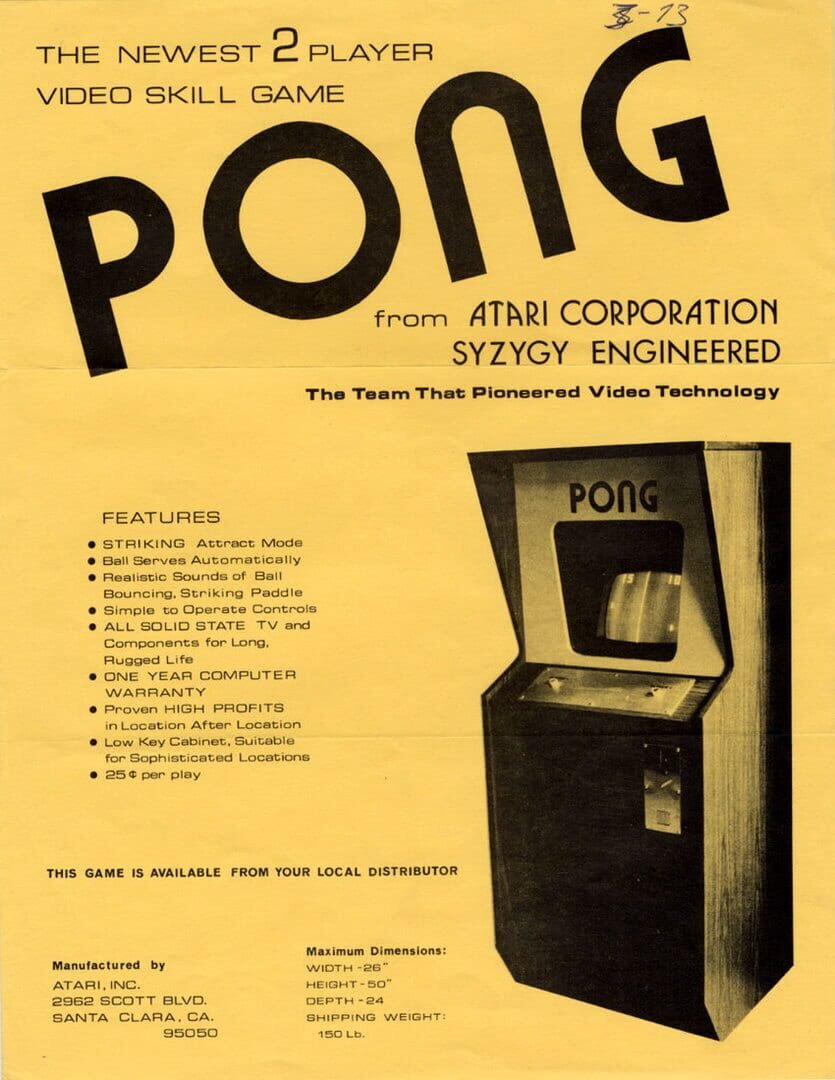
The gameplay of these videogames as you may have noticed, are confined to the boundaries of the screen.
Brainstorm as a class or group:
- How would you have increase the difficulty of Ms Pac Man or Space Invaders once a player had finished a level? Remember, the map can't change, and the player can't go outside the screen
Once you beat one level, the map wouldn't change, but the difficulty would increase in other ways - like, faster enemies, more enemies, less health collectibles or lives, and so on.
Remember, this was what was achievable at the time, it wasn't because the game developers weren't interested in making game worlds where players could go outside the dimensions of the screen, the technology didn't quite exist yet.
Brainstorm as a class or a group:
- What makes a good game world?
Teachers: many ideas may have come up, but we are guessing that one word almost definitely came up: explorable (or something like it).
Game 'worlds' conjures images of environments that are explorable, and give the player a sense of freedom to look around, and discover things for themselves.
The ability to explore is one of the key themes for game worlds!
Adventurous worlds
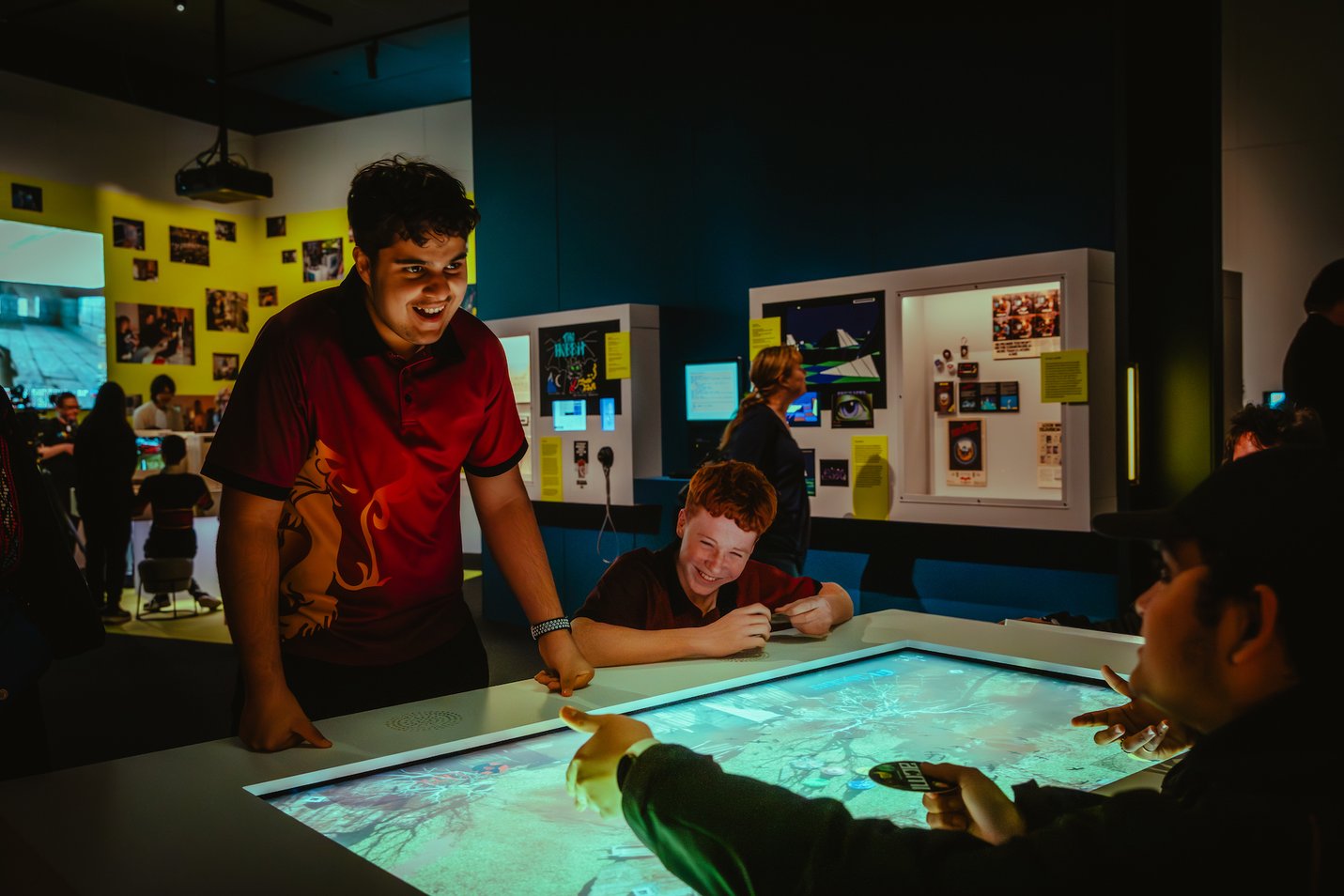
Dungeons and Dragons (D&D) is a table-top roleplaying game, and has inspired many videogames, and videogames in general, since the 1970s.
It is not a videogame, but D&D influenced early videogames, and still influences games and gaming to this day. That's because D&D leant into fantasy worlds, that felt adventurous to players.
Discuss as a class or group:
- What kinds of things do you think of when you hear 'fantasy' or 'adventure' worlds? Think about character types, the environment, lore, items, objects, storylines, and anything else you can think of
Dungeons and Dragons features a ‘Dungeon Master’ – this person isn’t playing the game like others, they are in a way a designer of the game experience, writer of the game story, map designer, and moderator all rolled into one.
A good D&D experience relies a lot on the imagination of the Dungeon Master, or DM, as well as the players, as they dream up their characters, and engage with the story, and world the DM has helped design.
Text, imagery, and imagination
DnD inspired many early game worlds, as game developers wanted to make game worlds that were explorable and made the player feel adventurous
Seeing as though the ability create side-scrolling games, or 3-dimensional game worlds didn’t exist yet, this wasn’t an easy task.
So the first explorable game worlds, were actually text-based adventures. Like D&D, many of these games were also adventurous, and many also took place in fantastical worlds.
Some were just text, like Colossal Cave Adventure. So the written word and player imagination were necessary!
If you've been to Game Worlds already, maybe you've had a play. If not, you can play for free online here - teachers, there are no ads or pop-ups at the time of writing for this site.
Players, we recommend saying "YES" to the offer of instructions, and then typing "HELP" to get the instructions and commands to play the game, because it is after, text-based - meaning, you need to enter instructions to advance through the world of the game.
You can also check out digitised note books from the creators on the ACMI website here.
Another famous text-based adventure set in a fantasy world was The Hobbit, which is based on a book (you might know Lord of the Rings) and set in Middle-Earth, a rich fantasy world.
You can find out more about The Hobbit on ACMI website.
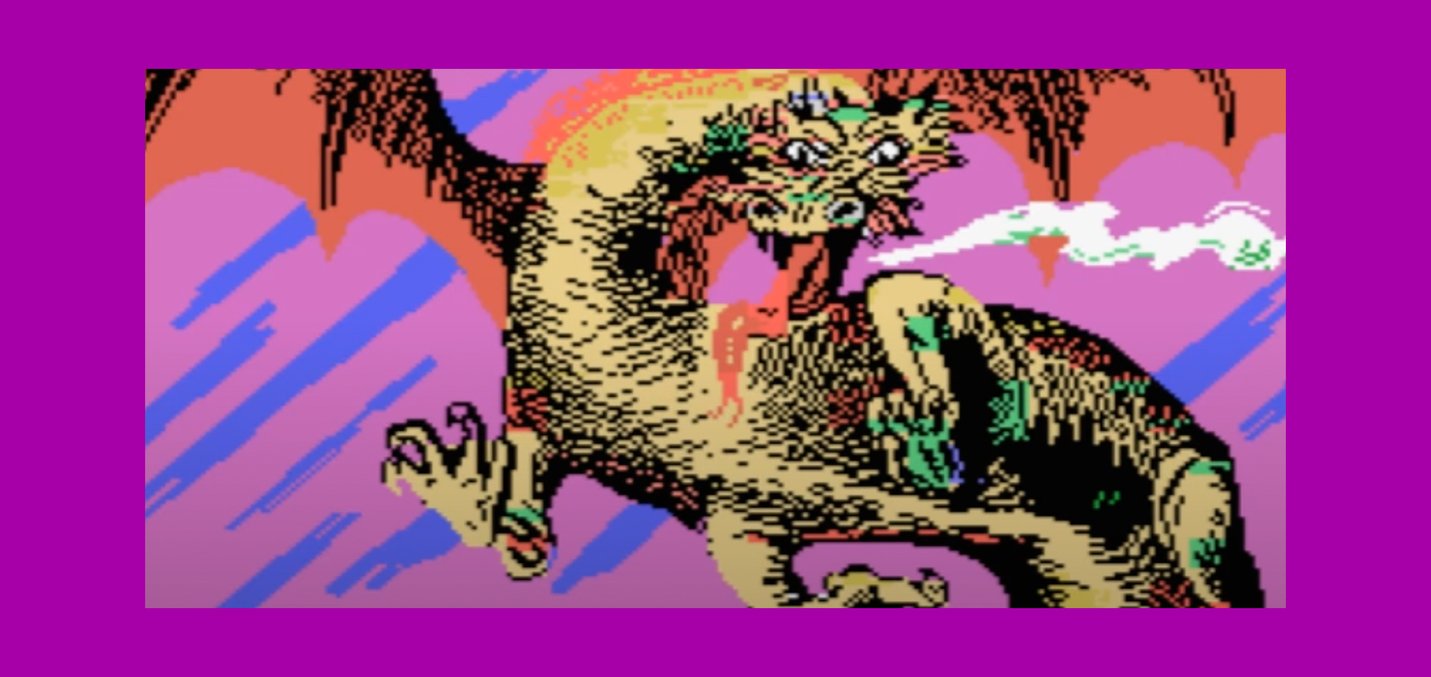
Activity sheet: setting and perspective
Time to tackle the first part of your ideation sheet, and choose a setting for your own game world, as well as a perspective.
We have talked quite a bit about fantasy and adventure game worlds so far, but not all explorable game worlds are fantasy ones.
Here is a list of possible settings for your game, as well as examples you might like to quickly research if you haven't heard of them, and add any other games you know of that have similar settings:
- Farms (examples: Stardew Valley, SimFarm)
- Ancient or historical times (examples: Age of Empires, Anno 1800)
- Home / suburban (examples: Unpacking, The Sims)
- Supernatural (examples: Luigi's Mansion)
- Futuristic (examples: Horizon Forbidden West, Starfield)
- Fantasy (examples: World of Warcraft, Tales from the Shire)
Time now to think about perspective.
This is how the player views the game world. Many games these days are set in three-dimensional worlds, but some have a first-person, and others have a third-person perspective. Classic games like Mario Bros and Sonic the Hedgehog have what a side-on perspective and are often called scrolling platformers.
Here are some types, including examples. Again, look up any you're not familiar with, and add any to the list that you have played:
- Isometric (examples, SimCity 2000, Unpacking)
- First-person 3D (Minecraft)
- Scrolling platformer (examples: Mario Bros., Hollow Knight)
- Third-person 3D (examples: Fortnite)
- Top-down (examples: Stardew Valley, Legend of Zelda (1986))
ACTIVITY SHEET: Choose a setting and a perspective for your game world
Shaping game worlds
Through much of the 1970s and 1980s, videogames worlds were created and then experienced by players.
When SimCity (1989) came along though, suddenly players could shape their own game worlds. SimCity is regarded as the original city-builder game, and it gave players a map, as well as lots of tools to build their own digital city from scratch. The original had a top-down perspective.
Its sequel SimCity 2000 (1993) is one of the most popular city-building games of all time, and had a much more visually striking isometric view.
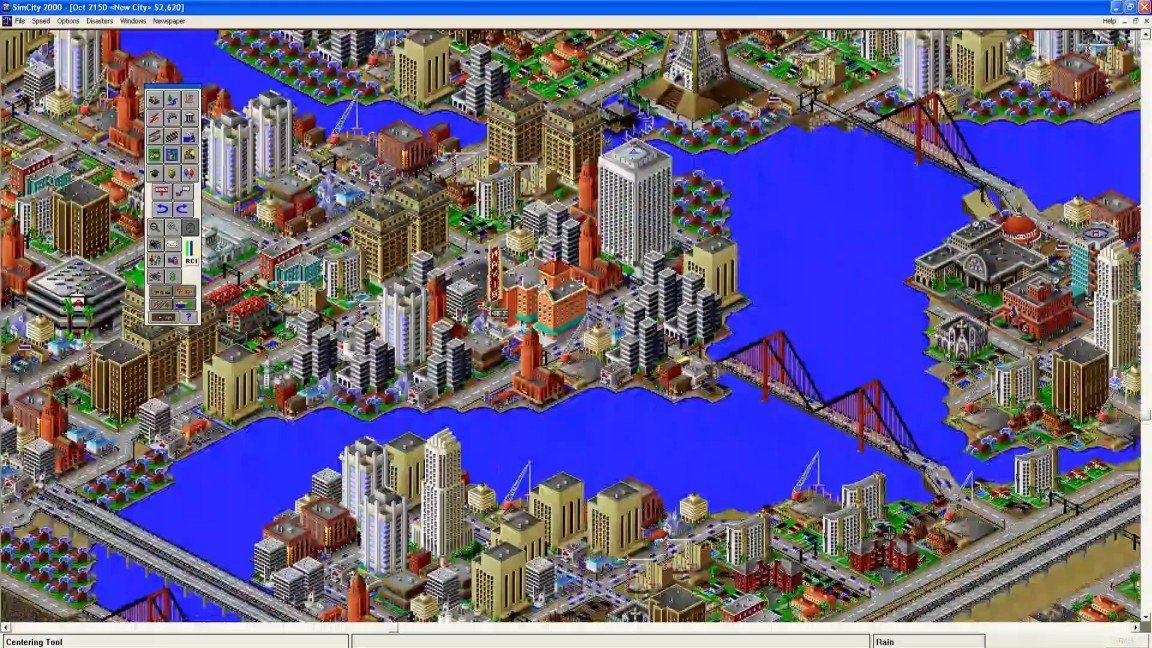
It led to an explosion of city builder games, but instead of imitating SimCity’s modern setting, many explored different time parts of the world and time periods, like Anno 1602 (1998), Ceasar (1992), or more science fiction settings, like Moonbase (1990) and Outpost (1994).
Brainstorm as a class or group:
- Think of as many games that you know of, where players can create and shape the game world
- Identify any favourites students have
Teachers: we imagine that Minecraft probably came up in some discussions!
In the early-2000s, city-building games and any videogame really where players could shape the world or environment directly, became known as 'sandbox' games.
Discuss:
- What is a 'sandbox' game?
- What do students expect players can do in a sandbox game?
Terra-Nil: the reverse city builder
There is a videogame featured in Game Worlds called TerraNil (2023) and it’s been described as an ‘reverse city builder’ - hopefully you saw and played it if you visited Game Worlds. If not, watch the trailer for Terra-Nil, then discuss:
Discuss:
- How is the game different from city-builders? Why is it called a reverse-city builder do you think?
- What are the objectives of the game do you think? What is the player meant to do?
- Do you think this game has a message? If so, what is it, or what do you think the message is about?
Teachers: in this game, you control a ship that lands in different ruined landscapes on a future earth, and you deploy different types of buildings and machines to replenish and restore the environment – you improve the soil, restore waterways, which improves the air – things grow back, and animals return.
Then to finish it off, you deconstruct all the buildings and machines you’ve deployed, and they rebuild the ship you came in on, so you can fly away, leaving no trace except for the dramatic improvements you’ve made to the environment.
Instead of taking over a landscape with endless buildings and urbanisation (like in normal city-builders), you restore a ruined environment (hence why it's labelled a reverse city-builder!)
Teachers, we also have a free Geography and Environmental Science focused lesson plan that uses Terra Nil.
Many city-builder games and games where we can shape a game's environment don't feature characters. Instead, players have a omniscient perspective of the game world - this means the player kind of hovers over the game world, and plays god over the digital environment.
Other sandbox games do features characters within the game world.
A great example is Stardew Valley (2016), and students would already be aware that Minecraft (2011) explore and shape the world from a first-person perspective. In both these games you can create your own character, or avatar.
Activity sheet: character, player abilities, and environment
Think about your game, the setting and perspective you've chosen, and decide if this game will feature a playable character.
If so, sketch out what they might look like, or make a note if you imagine your game having a character creator where players can decide what their character will look like.
If you have a character or not, you can still do the next bit.
Think about players abilities and actions - what can they do to interact with the game world and environment. It can be as simple as being able to jump from platform to platform, or as complex as being able to plant trees or construct buildings.
It's up to you!
ACTIVITY SHEET: Sketch your character if you have one, and add player abilities and actions
You have a setting and perspective for your game idea, and now an idea around how players can interact with, or shape, the game world.
But what is the game world made up of?
The environment is really important, as it is the fabric of the game world.
All game worlds will have a terrain for the players to move their characters around on or build things on, but what other objects (natural and human-made) or features will make up your game world?
You can think broadly, like rainforest, forest, tundra, desert etc, or as be specific, pine trees, suburban houses, mazes and so on.
But give people an idea of what they would see, and what they would interact with, when the stepped into your game world.
ACTIVITY SHEET: game environment
Activity sheet: game experience
How we experience games doesn’t come down to just single, co-op or multiplayer (though that’s important), but the experience game makers want their players to have.
On your sheet, decide if you want your game world to be experienced as a single player, co-op, or multiplayer game. If you have another idea, put that in.
Now think about how you want players to experience your game and the game world, and the feelings and emotions you want players to feel from this game world.
You have 14 points to spend across the ‘emotions’ or ‘feelings’ you want the player to have!
ACTIVITY SHEET: spend your game experience points
Congratulations, it's GAME OVER for this resource...almost.
Your final challenge, if you choose to accept, is to share your ideas with your friends and classmates.
Before you all do though, teachers, help set the tone and encourage students to:
- identify one thing they like about each game idea
- share any positive feedback they have
- ask any questions that might help them understand the game or game world better (there's bound to be things groups have thought about, that the activity sheet didn't ask of them)
Thanks to teachers and students for engaging with this resource.
